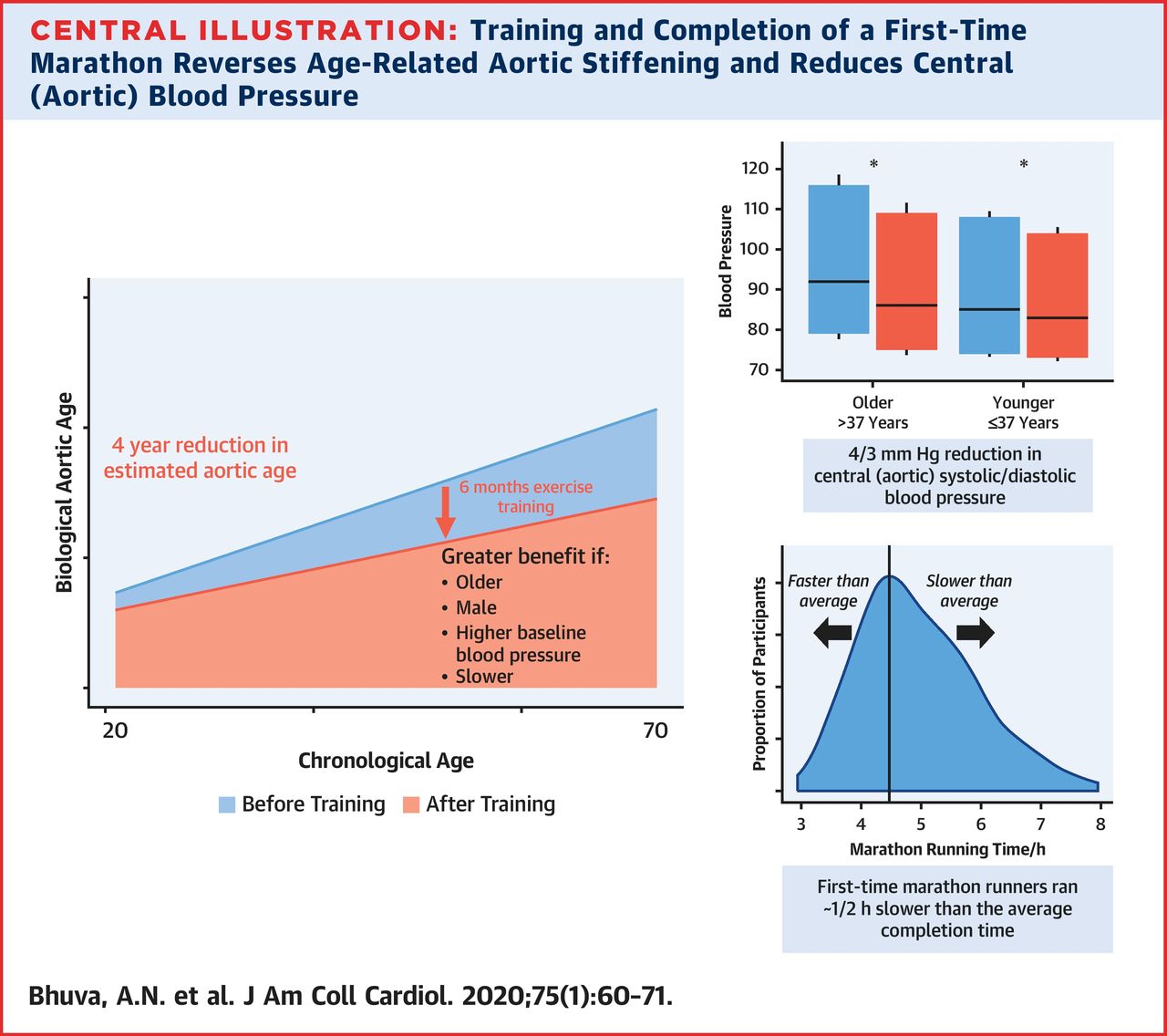A marathon rejuvenates the arteries...by up to 4 years
A group of healthy individuals who trained for the first time to run their first marathon showed a reversal in age-related aortic stiffening, a known cardiovascular risk factor.
Training for a first marathon reverses age-related aortic stiffening
A group of healthy individuals who trained for the first time to run their first marathon showed a reversal in age-related aortic stiffening, a known cardiovascular risk factor.
Made in cooperation with our partners in esanum.it
Aging increases aortic stiffness, contributing to cardiovascular risk even in healthy individuals. Aortic stiffness can be reduced through supervised training programs. A recent study has tried to determine whether training for a first marathon can reverse age-related aortic stiffness.
After 6 months of training for the London Marathon, 138 people demonstrated improved distensibility in two levels of the thoracic aorta: the proximal descending aorta (average increase of 9%) and the diaphragmatic descending aorta (with an increase of 16%). This translates into the regaining of 4 years of "aortic age" given the amount of distensibility that we know is lost on average due to aging. More reversals in aortic stiffening have been observed in older individuals, men, slower runners and those with higher blood pressure.
According to the authors, if the effects of exercise on the stiffening of the observed large arteries can be sustained, they could have important effects on myocardium, kidneys, brain and various other organs, with a potentially large impact on age-related conditions.
Study participants had never run a marathon before and ran less than 2 hours a week at baseline. Half of the enrolled cohort consisted of men. The average age was 37. Their recommended training regime consisted of 6-13 miles of running per week before the 2016 and 2017 London Marathons.


According to the research team, the improvement in aortic stiffness was both functional due to lower blood pressure and intrinsic due to structural changes in the descending aorta. Not all segments of the thoracic aorta showed better elasticity with marathon training however, as no change in the ascending aorta was seen in the study.
The research authors recognized that the study of healthy marathon runners precludes the generalizability of results to hypertensive individuals and those who did not complete the marathon. In addition, they had no information on the intensity, frequency, and type of exercise undertaken by each person. However, according to the authors, this study stresses the importance of lifestyle to change the aging process, particularly because it seems to be 'never too late' to get the benefit observed in older and slower runners. The stiffening of the great arteries according to the researchers must become a high priority therapeutic goal.
Source:
Bhuva AN, et al. Training for a first-time marathon reverses age-related aortic stiffening. J Am Coll Cardiol 2020; DOI: 10.1016/j.jacc.2019.10.045